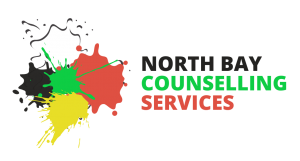Healing the Inner Child: Understanding the 6 Core Wounds

Every adult carries a younger version of themselves within—the inner child who once felt joy, curiosity, fear, and pain. When that child’s emotional needs are unmet, they carry wounds into adulthood that silently influence our relationships, behaviours, and self-worth.
At North Bay Counselling Services, many clients arrive not knowing why they feel stuck in cycles of self-doubt, dysfunctional relationships, or emotional emptiness. Much of this inner turmoil can be traced back to wounds of the inner child—a concept brought to life through the work of John Bradshaw in his groundbreaking book, Homecoming: Reclaiming and Championing Your Inner Child.
John Bradshaw and the Return to the Inner Child
John Bradshaw was one of the first to widely introduce the idea of the “wounded inner child” in therapeutic work. In Homecoming, he explained how unresolved childhood pain—especially related to toxic shame, emotional neglect, and unmet developmental needs—gets internalized and re-emerges in adulthood through patterns like addiction, emotional disconnection, and codependency.
Bradshaw didn’t just identify the wounds; he gave us a roadmap to healing—through reconnection, reparenting, and reclaiming the lost parts of ourselves.
The 6 Core Wounds of the Inner Child
1. Codependency
- Core Experience: Losing oneself in others.
- Signs: Difficulty setting boundaries, people-pleasing, over-functioning in relationships, low self-worth.
- Inner Child Root: Often develops when a child is made responsible for the emotional needs of a parent, or when love was conditional on compliance and caretaking.
2. Acting Out & Acting In
- Core Experience: Emotional dysregulation and self-punishment.
- Signs: Explosive anger, rebellion, risky behaviors (acting out) or self-harm, depression, and withdrawal (acting in).
- Inner Child Root: Stems from not having safe ways to express emotions, or from being punished or ignored when trying to get attention or help.
3. Trust Issues
- Core Experience: Believing that others will hurt, deceive, or abandon you.
- Signs: Difficulty relying on others, hypervigilance, controlling behavior, or constant doubt in relationships.
- Inner Child Root: Arises when caregivers were unpredictable, dishonest, or violated boundaries, leaving the child unsure of who or what was safe.
4. Intimacy Issues
- Core Experience: Fear of closeness and vulnerability.
- Signs: Sabotaging relationships, emotional unavailability, or merging too quickly and losing self.
- Inner Child Root: Often rooted in early experiences where vulnerability led to shame, rejection, or betrayal, causing the child to equate closeness with danger.
5. Addiction & Compulsions
- Core Experience: Escaping emotional pain through external means.
- Signs: Substance abuse, compulsive behaviors (eating, shopping, working), or obsessive thoughts.
- Inner Child Root: These behaviors often served to numb emotional pain or fill the void left by unmet needs, particularly when a child was not taught emotional regulation or was exposed to addictive environments.
6. Emptiness
- Core Experience: Chronic sense of something missing; feeling numb, hollow, or disconnected.
- Signs: Difficulty identifying desires, lack of purpose, existential sadness.
- Inner Child Root: This deep emptiness often stems from emotional neglect, where the child’s inner world was unseen or dismissed, leaving them unsure of their own identity or value.
The Path to Healing
As Bradshaw teaches in Homecoming, the goal isn’t to blame our caregivers—but to give ourselves what we didn’t receive. Healing the inner child involves:
- Recognizing and naming our wounds
- Reconnecting with the child within through visualization, journaling, and compassionate self-dialogue
- Reparenting ourselves with kindness, consistency, and care
- Releasing shame and rewriting the internal narrative
Healing is possible. It’s not a quick fix, but a journey of self-compassion and emotional repair that allows us to build relationships and lives that feel grounded, fulfilling, and authentic.
You Don’t Have to Do It Alone
At North Bay Counselling Services, we create a safe, supportive space to help you explore your inner world, reconnect with your inner child, and begin the process of healing long-standing wounds.
Whether you’re struggling with codependency, addiction, or emotional numbness, therapy can help you meet your inner child with understanding and love—for perhaps the first time.
Contact us today to schedule a consultation and begin your healing journey.













